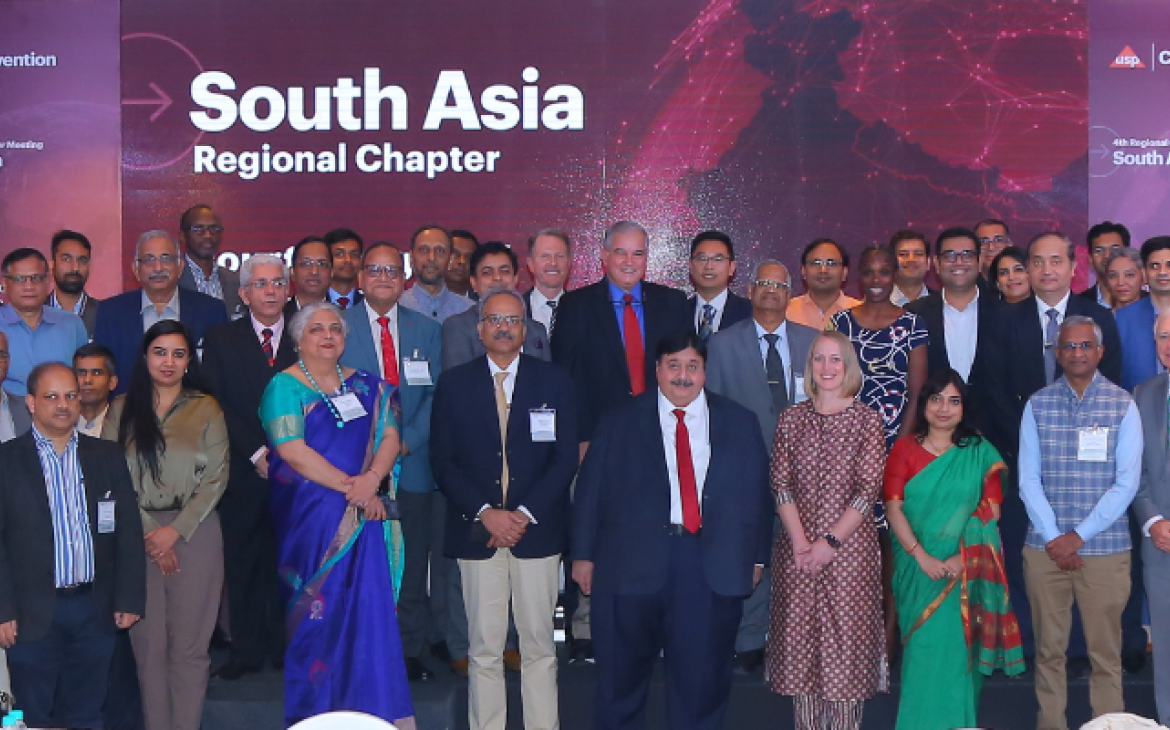
An all-too-familiar experience in recent years, medicines supply chain disruptions can arise from many factors, including pandemics like COVID-19, natural disasters, and geopolitical events like those taking place right now in Eastern Europe.
Regardless of the cause, the best defense against a disruption is preparation before the crisis hits.
President John F. Kennedy famously said in his 1962 State of the Union address, “The best time to repair the roof is when the sun is shining.” While we are not past COVID-19, much of the world has entered a new phase of the pandemic so, we believe now is the right time to make sure our pharmaceutical supply chain “roof” is fixed and ready to weather the next disruption.
USP’s second installment in our three-part Convention Exchange Series is dedicated to strengthening the medicines supply chain, focused on the topic of preparedness. This convening followed the first series event on reducing barriers to the adoption of advanced manufacturing technologies which have the potential to strengthen supply chain resilience.
At the April 1 event, Convention Members discussed elements of the continuous cycle of preparedness: planning, evaluation, and corrective action. We held a panel conversation with topic experts Nicolette Louissaint, Ph.D., M.B.A., Senior Vice President of Policy and Strategic Planning at Healthcare Distribution Alliance, and USP Convention Member; Barbara Solow, Ph.D., Vice President of Business Development and Government Contracting at Curia, a contract research, development, and manufacturing organization; and Brian Tse, Ph.D., formerly with the Biomedical Advanced Research and Development Authority and now Vice President at The Conafay Group, a government relations consultancy focused on life sciences.
The panelists addressed strategies for building and sustaining preparedness from their varying vantage points. Their dialogue focused on the criticality of considering the end-to-end supply chain, the power of public-private partnerships to advance preparedness goals, and the importance of having buffers in place that allow agility. And the complexity of the medicines supply chain was an underlying theme throughout the discussion. The panelists agreed that there is no silver bullet to supply chain preparedness; instead, a multifaceted approach is critical, and reliable appropriations—during and outside of a crisis—as well as investments in sustainable infrastructure are vital elements of a successful approach.
One antidote to the complexity of the medicines supply chain is increased visibility, enabling stakeholders to prepare more strategically. Vimala Raghavendran, Senior Director of USP’s Pharmaceutical Supply Chain Center, provided an early demonstration of USP’s Medicine Supply Map, an information system that identifies, characterizes, and quantifies risk in the upstream pharmaceutical supply chain. She described how insights from the map can help stakeholders prioritize supply chain investments to reduce drug shortages and improve mitigation and preparedness efforts. Government agencies also can use the Medicine Supply Map to identify what raw materials, active pharmaceutical ingredients or finished dose medical countermeasures to target for industrial base expansion.
Preparedness measures must integrate efforts to prevent, protect, mitigate, respond, and recover to accomplish national health security and reduction of public health and safety risks. As the United States transitions to the recovery phase of the COVID-19 pandemic, it is critical to continue to reflect on insights and lessons learned from the past two years and appropriately respond with improved processes, mitigation measures and policy solutions that strengthen public health infrastructure and build resiliency into the medicines supply chain before the next crisis occurs.
On May 24, USP will host the third and final installment of our Convention Exchange Series on a resilient pharmaceutical supply chain. That meeting will focus on building and maintaining the supply of quality antimicrobials.


